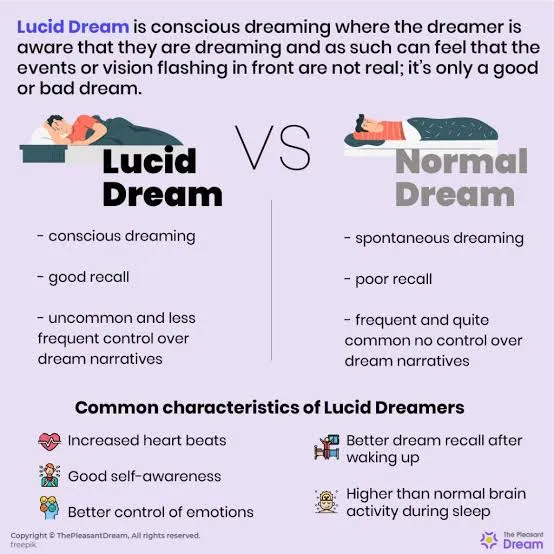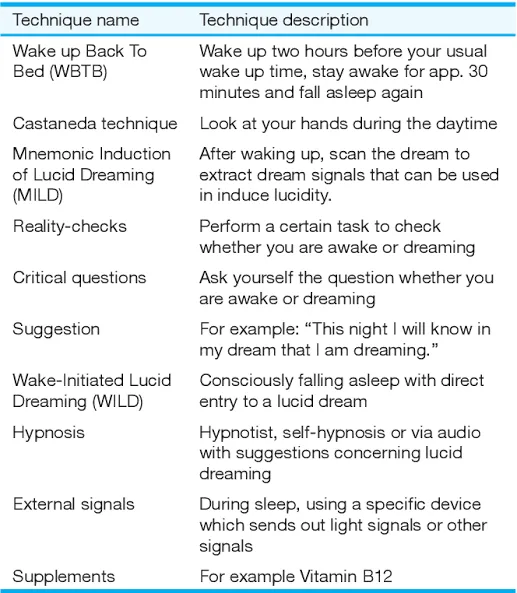Unraveling the Mysteries of Lucid Dreaming: Exploring the Phenomenon of Conscious Dream Control

Source
Lucid dreaming, a state where one becomes aware of and can control their dreams, has fascinated humanity for centuries. In this article, we will delve into the depths of lucid dreaming, exploring its definition, history, scientific understanding, techniques for induction, potential benefits, and practical applications.
What is Lucid Dreaming?
Lucid dreaming occurs when an individual becomes aware that they are dreaming while still in the dream state. Unlike typical dreams where the dreamer remains passive and unaware of the dream's illusory nature, lucid dreamers possess the ability to recognize the dream as a construct of their mind and, in some cases, exert control over various aspects of the dream environment and narrative.
History and Cultural Significance
The concept of lucid dreaming dates back centuries and is deeply rooted in various cultures and spiritual traditions worldwide. Ancient texts and philosophical writings contain references to the phenomenon, with accounts of individuals consciously navigating the dream realm for creative inspiration, spiritual enlightenment, and personal growth.
In Tibetan Buddhist practices, lucid dreaming is recognized as a means of exploring the nature of reality and achieving enlightenment. Similarly, Indigenous cultures view dreams as portals to the spirit world, where communication with ancestors and divine beings is possible.
Scientific Understanding of Lucid Dreaming
While lucid dreaming has long been regarded as a mystical or esoteric experience, modern science has shed light on the phenomenon through neuroscientific research and empirical studies. Studies utilizing electroencephalography (EEG), functional magnetic resonance imaging (fMRI), and polysomnography have provided insights into the brain activity associated with lucid dreaming.
Researchers have identified specific neural correlates and cognitive processes involved in lucid dreaming, including increased activity in the prefrontal cortex—a region associated with self-awareness, executive function, and metacognition. Additionally, studies have demonstrated that individuals can learn to induce lucid dreams through various techniques and training programs.
Techniques for Lucid Dream Induction
Numerous techniques and practices have been developed to facilitate the induction of lucid dreams. These methods often involve cultivating awareness, reality testing, mnemonic exercises, and establishing intentionality before sleep. Some popular techniques include:
Reality Testing: Performing reality checks throughout the day to verify whether one is in a waking state or a dream state.
Mnemonic Induction of Lucid Dreams (MILD): Mentally rehearsing the intention to recognize and become lucid in dreams while falling asleep.
Wake-Back-to-Bed (WBTB): Waking up during the night, staying awake for a short period, and then returning to sleep with the intention of entering a lucid dream.
Wake-Induced Lucid Dreaming (WILD): Transitioning directly from wakefulness to the dream state while maintaining consciousness and awareness.
Dream Journals: Keeping a journal to record and reflect on dream experiences, facilitating dream recall and self-awareness.
Potential Benefits of Lucid Dreaming
Beyond its inherent fascination, lucid dreaming offers a range of potential benefits for personal development, creativity, and well-being. Some of these benefits include:
Exploration and Creativity: Lucid dreaming provides a safe and immersive environment for exploring creativity, problem-solving, and artistic expression.
Therapeutic Applications: Therapists and psychologists have begun to explore the therapeutic potential of lucid dreaming for treating nightmares, PTSD, anxiety, and other mental health conditions.
Personal Growth and Insight: Lucid dreaming can foster self-awareness, emotional processing, and personal growth by providing opportunities for introspection and confronting subconscious fears and desires.
Skill Enhancement: Some individuals use lucid dreaming as a tool for practicing real-world skills, such as public speaking, sports performance, and language acquisition, through visualization and simulation.
 source
sourcePractical Applications and Future Directions
As our understanding of lucid dreaming continues to evolve, researchers and practitioners are exploring its practical applications and potential integration into various domains. From education and training to virtual reality and entertainment, the possibilities are vast.
In the field of education, lucid dreaming could be utilized to enhance learning and memory retention by simulating real-world scenarios and facilitating experiential learning. Similarly, in virtual reality and gaming, lucid dreaming techniques could enhance immersion and interactivity, blurring the lines between virtual and physical reality.
Furthermore, ongoing advancements in neuroscience, wearable technology, and biofeedback systems may enable new methods for inducing and monitoring lucid dreams, opening up avenues for personalized dream experiences and therapeutic interventions.
 source
sourceConclusion
In conclusion, lucid dreaming represents a fascinating frontier of human consciousness and cognition, offering profound insights into the nature of reality and the mind. While much remains to be discovered and understood about this phenomenon, the exploration of lucid dreaming holds promise for personal growth, creativity, and the advancement of science and technology. As we continue to unravel the mysteries of lucid dreaming, we may unlock new potentials for enhancing our lives and understanding the depths of human consciousness.
#luciddreaming #consciousdreamcontrol #dreamexploration #mentalwellbeing #cognitivescience #neuroscience #selfawareness #creativity #personalgrowth #therapy #virtualreality #technology #brainactivity #sleepresearch #consciousnessexploration #mindfulness #luciddreamingtechniques #dreaminduction #dreamrecall #luciddreamingbenefits #luciddreamingapplications #futureofluciddreaming #cognitiveenhancement #dreammanipulation #brainstimulation #realitytesting #mnemonicinductionofluciddreams #wakebacktobed #wakeinducedluciddreaming #dreamjournals #therapeuticpotential #skillenhancement #educationalapplications #virtualrealityintegration #neuroscienceadvancements #wearabletechnology #biofeedbacksystems #personalizeddreamexperiences #SEO #searchengineoptimization #articletags #dreamtherapy #luciddreamingresearch #mindbodyconnection #dreamexplorationtechniques #consciousnessstudies #mentalhealthbenefits #dreamscience #luciddreamingtools #luciddreamingcommunity #luciddreamingforums #luciddreaminghacks #luciddreamingtips #luciddreamingtricks #luciddreamingadvice #luciddreamingknowledge #luciddreamingjourney #luciddreamingadventure #luciddreamingdiscovery #luciddreamingexperience #luciddreamingimmersion #luciddreamingpractice #luciddreamingskills #luciddreamingdevelopment #luciddreamingfuture #luciddreamingpotential #luciddreamingpossibilities #luciddreaminginsights